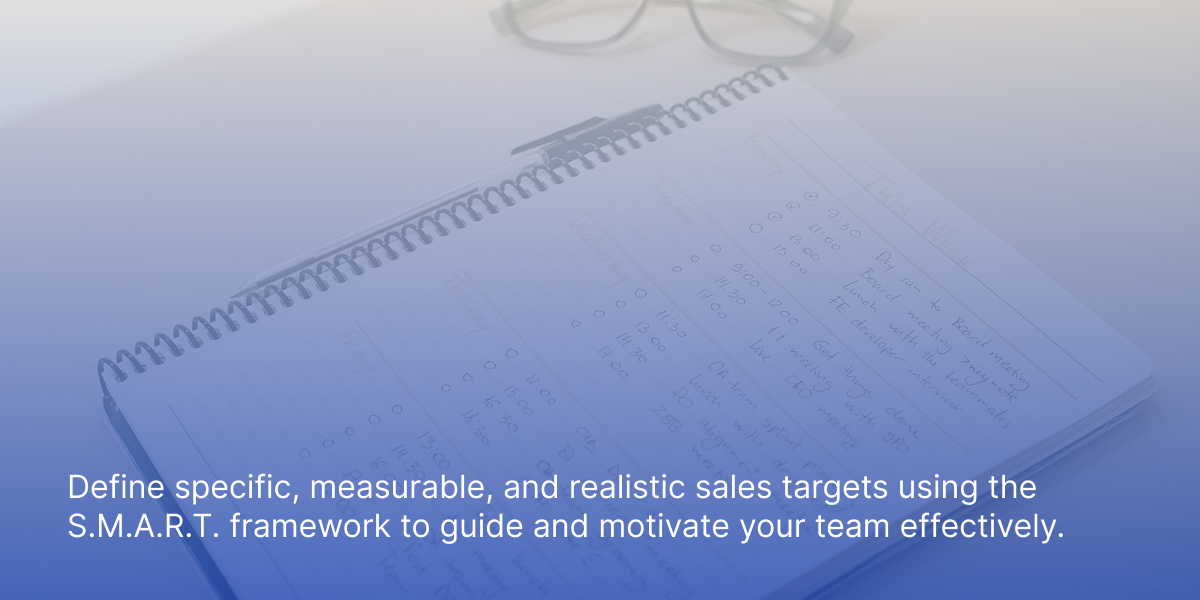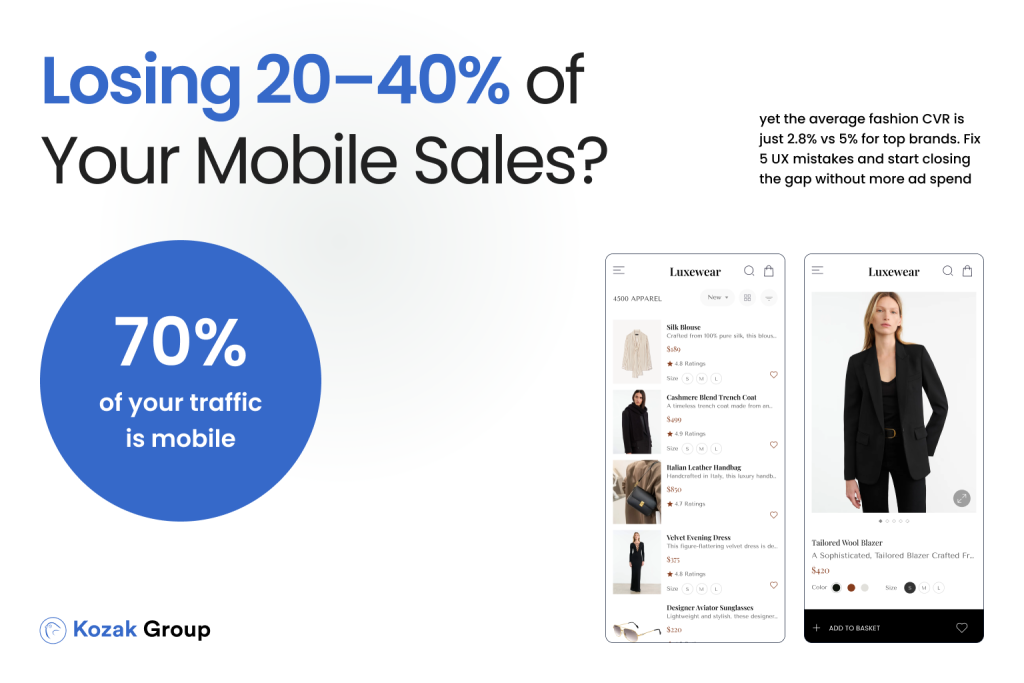Looking for ways to increase sales and boost your sales numbers? In today’s competitive market, knowing how to increase sales is critical for business growth. This article delivers practical strategies to help you enhance sales performance and drive revenue. Let’s dive into proven methods that can elevate your sales game.
Key Takeaways
- Set clear, measurable sales goals using the S.M.A.R.T. framework to drive focus and performance.
- Understand your target market through detailed buyer personas and tailored strategies for effective engagement.
- Leverage digital marketing channels and data-driven decision-making to optimize performance and enhance customer relationships.
- Leverage content marketing to drive conversions and improve overall marketing strategies.
Set Clear Sales Goals
Your sales team can be directed and your sales strategy can be integrated with the broader objectives of the company through setting clear, quantifiable targets for sales.
By employing the S.M.A.R.T. criteria – which stands for Specific, Measurable, Achievable, Relevant, and Time-bound—you guarantee that your objectives are both attainable and demanding while being based on past performance data, present market trends, and what your team is actually capable of achieving. Utilizing sales analytics to track metrics such as lead conversion rates and engagement data allows you to identify patterns and bottlenecks, facilitating timely adjustments and informed decision-making.
Define Your Objectives
Your team is directed and business expansion promoted through the establishment of sales goals. Concentrating on sales volume, a measure of financial success, is determined by multiplying the quantity of items a company sells by the time frame it covers. This calculation may also reveal probable lost sales as well as generate insights into overall sales revenue.
By establishing these targets, your team gains clear benchmarks to aim for, which aids in securing deals and advancing business development.
Track Progress Regularly
Monitoring performance indicators is essential for tweaking sales strategies to enhance outcomes. It’s important to consistently reassess and refine sales objectives and key performance indicators in response to changing market dynamics.
Recognizing possible obstacles within your sales approach can reduce risks and increase the efficacy of your sales operations, promoting ongoing advancement.
Celebrate Milestones
Acknowledging the hard work of your sales team helps to keep spirits elevated and motivation strong. Showing gratitude for their successes contributes to a conducive atmosphere, which in turn boosts overall performance.
It is crucial to recognize each person’s input and offer incentives that truly connect with your team members as you commemorate significant achievements.
Understand Your Target Market
Grasping the nuances of your target market is crucial for positioning your product successfully. Articulating a persuasive value proposition enables customers to comprehend what differentiates your company’s products from others. Rather than simply enumerating features, sales strategies ought to highlight how the product addresses customer issues and resolves their specific pain points.
To customize your strategy appropriately, it’s important to develop in-depth buyer personas, carry out thorough market research, and divide your audience into segments.
Create Detailed Buyer Personas
A buyer persona is a representation of an ideal potential customer. This representation is semi-fictional and is created based on data and research. Creating buyer personas requires market research, past customer data, surveys, focus groups, and sales team insights.
Detailed buyer personas improve response to targeted messaging and help tailor marketing strategies to meet specific customer needs.
Conduct Market Research
Employing both qualitative and quantitative research techniques offers a thorough understanding of consumer inclinations. Insights into customer preferences and your target market are revealed through market research. Qualitative data concerning customer views and experiences is collected via methods such as surveys and focus groups.
By leveraging these insights, companies can refine their sales strategies to more effectively cater to the needs of customers, with an aim to boost sales.
Segment Your Audience
Thorough knowledge of your target audience helps tailor sales strategies effectively. Develop profiles of ideal customers based on demographics, behavior, and preferences using surveys, focus groups, and data analysis.
This segmentation allows for more personalized and effective marketing efforts.
Enhance Your Value Proposition
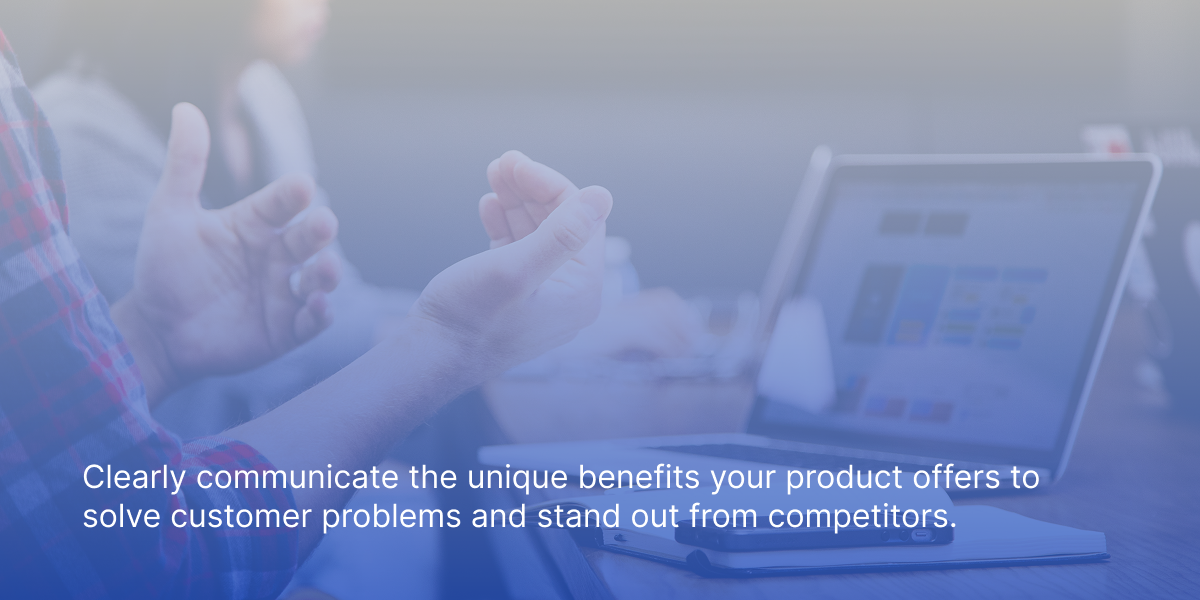
For effective brand recognition, it’s critical that your marketing materials effectively convey this value proposition to ensure clarity and comprehension. Prioritize showcasing customer benefits, honing your communication strategy, and persistently evaluating and refining in order to strengthen your value proposition. Additionally, incorporating customer testimonials can reinforce confidence and influence potential buyers more effectively.
Focus on Customer Benefits
Grasping the advantages that customers receive enables your sales team to engage more effectively with prospects. It’s crucial for sales pitches to convey distinctly the special gains a customer obtains from selecting your product, emphasizing these benefits over simply enumerating features.
Proactively responding to potential customer inquiries in the sales narrative avoids presumptions and aids in dispelling doubts, thus strengthening the impact of the benefits outlined.
Refine Your Messaging
To effectively engage customers, marketing materials must employ language and terms that are familiar to them. By doing so, it amplifies relatability and comprehension, thereby facilitating a stronger connection between potential purchasers and the value being presented.
It is crucial for sales pitches and other promotional content to articulate your value proposition with clarity in order to successfully convince prospective clients.
Test and Iterate
A persuasive value proposition sets your product or service apart from the competition and leads to increased sales. Actively pursue customer feedback in order to enhance your offerings, and regularly examine data for identifying trends that can help hone your sales strategies.
Make certain that both your marketing materials and sales pitches convey the distinct value proposition of what you’re offering with clarity.
Optimize Your Sales Funnel
A meticulously crafted sales funnel is instrumental in transforming initial interest into devoted patrons by steering prospective buyers through a series of deliberate interactions. The stages within the sales funnel encompass awareness, interest, decision-making, and ultimately taking action. To optimize the efficiency of the sales funnel, it’s crucial to understand and improve sales cycles by pinpointing locations where potential leads might be hindered as well as identifying which sales representatives are excelling.
Enhancing checkout procedures can lead to notable improvements in conversion rates. This includes simplifying the steps involved and providing an assortment of payment methods for convenience. Setting up automatic follow-up messages for customers who have abandoned their shopping carts can rekindle their interest and encourage them to finalize their purchases.
Map Out the Customer Journey
The model of the sales funnel depicts the path a customer takes from initial engagement to final transaction, encompassing phases such as awareness, interest, decision-making, and taking action.
By understanding these distinct stages within the funnel, companies can customize their marketing tactics and messaging to effectively shepherd customers along this journey. Charting out this process allows for pinpointing moments where engaging with customers and converting them is most feasible.
Address Bottlenecks
Addressing weak points in the sales funnel improves conversion rates and revenue. Real-time analytics and forecasting tools track sales performance effectively. Engaging potential customers reduces drop-off rates and ensures a smoother transition through the sales funnel.
Automate Follow-Ups
CRM tools ensure timely communication with leads, improving conversion chances through nurtured customer relationship management. Follow-ups nurture relationships and increase conversion rates.
Automating follow-ups helps maintain consistent engagement with leads, ultimately driving higher sales success.
Leverage Digital Marketing Channels
An effective marketing strategy can lead to an increase in sales. Creating content that is deemed valuable fosters trust and can result in shorter cycles for selling products or services. It’s critical to not only have a website, but also invest in SEO and online marketing tactics.
By employing remarketing techniques, businesses are able to adhere to the shopping habits of consumers, ensuring their advertising efforts reach users across various devices. Captivating methods like blogging and video creation pique the interest of potential customers, while pay-per-click ads target those who are actively searching for what you offer.
Sending tailored emails and conducting digital follow-ups with previous customers serves as a reminder about your offerings. Redirecting funds towards more fruitful sales channels may significantly boost overall marketing efficacy. Analyzing metrics related to marketing allows for identification of which avenues draw in customers most efficiently at reduced costs.
Invest in SEO
Enhancing the website’s content for search engines can lead to a surge in organic traffic and elevate its visibility. Putting resources into SEO enhances the digital footprint, draws in prospective clients, and leads to an uptick in sales revenue.
This process encompasses incorporating pertinent keywords, crafting top-tier content, and confirming that the site is accessible and optimized for mobile users.
Run PPC Campaigns
PPC advertising reaches customers actively searching for products, maximizing visibility and sales. Tracking customer acquisition costs assesses marketing strategy effectiveness.
By running targeted PPC campaigns, businesses can ensure their ads reach the right audience, driving more traffic and conversions.
Engage on Social Media Platforms
Lookalike audiences are composed of individuals who exhibit similar traits and actions to your current customers, facilitating focused communication efforts. By comparing customer information with its extensive data, Facebook identifies users that resemble existing clients for this purpose.
Having a robust online presence across various social media platforms provides businesses the opportunity to engage with their community and efficiently market their offerings. Leveraging lookalike audiences can improve marketing tactics by targeting potential new customers predisposed to have an interest in what you’re selling.
Improve Customer Experience
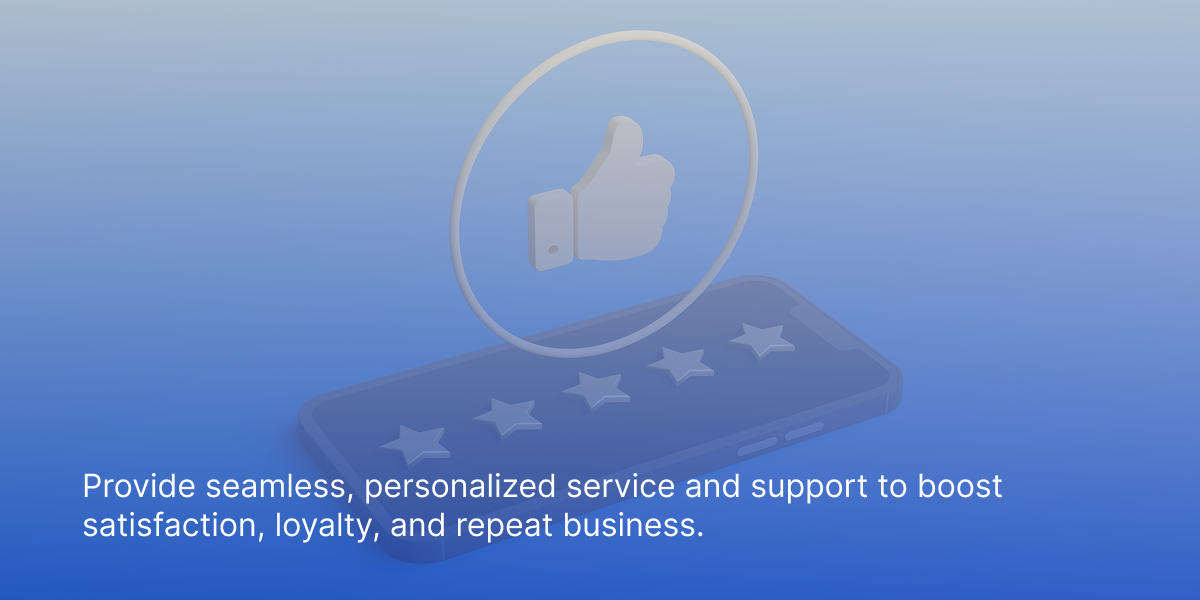
Ensuring that all teams share a common vision allows for every point of contact with customers to be cohesive and smooth. Such coordination augments the entire customer journey, leading to an improved interaction with your brand or service.
Personalize Interactions
Tailoring interactions and offers to individual preferences significantly increases sales and attracts more customers. 80 percent of customers prefer personalized experiences, which create a strong first impression, build trust, and increase conversion likelihood.
Customer tracking helps businesses understand behaviors. Initial interactions should address specific challenges to engage leads. Personalized training or customer service demonstrates value and enhances the customer experience.
Post-sales engagement ensures customers feel valued and supported after purchase, fostering long-term relationships.
Simplify the Checkout Process
Offering a variety of payment methods, including credit cards, Google Wallet, and ApplePay, can lead to an increase in sales. Ensuring that the mobile user experience is finely tuned with quick-loading pages and straightforward navigation enhances the efficiency of the checkout procedure.
It’s critical for e-commerce websites to prioritize site security in order to safeguard customers’ payment details and foster trust. To boost cart recovery rates, it is important for any e commerce brand to simplify the process for shoppers to revisit their carts at a later time using various devices.
Offer Exceptional Support
By providing top-notch customer service and ensuring a smooth purchasing process, businesses can boost their sales and foster customer loyalty. Tailoring interactions with clients based on their data allows for personalized recommendations that improve the overall shopping experience.
Upsell and Cross-Sell to Existing Customers
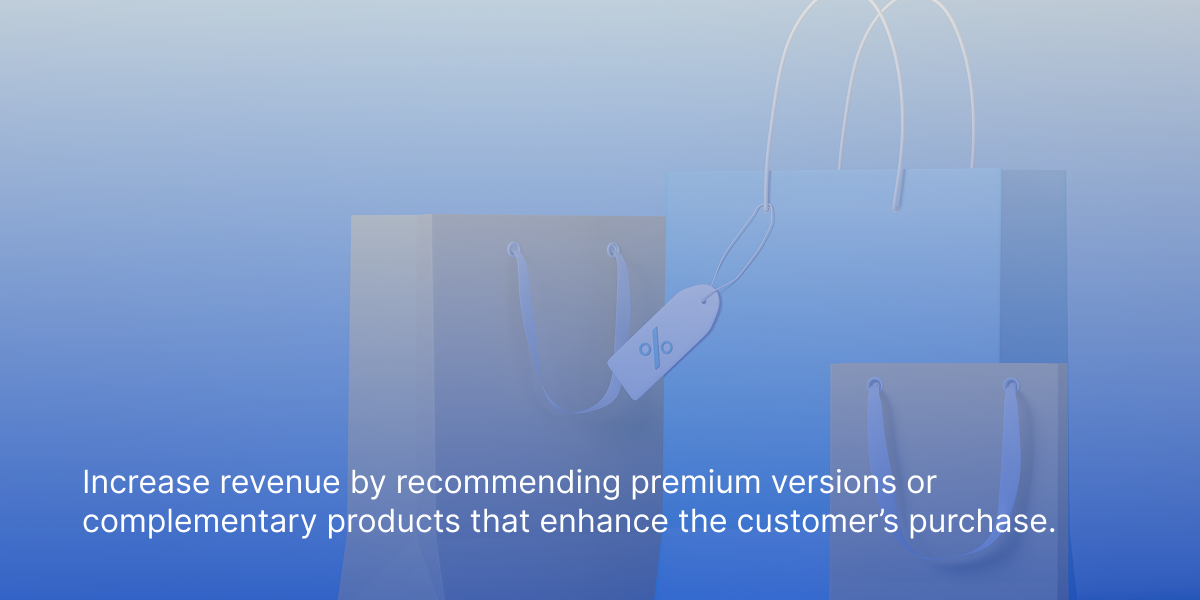
During customer interactions, it’s crucial for sales representatives to identify opportunities for upselling and cross-selling. By augmenting the sales experience and raising the average value of orders via these methods, companies can significantly bolster their revenue streams—this hinges on effectively leveraging both product offerings and proven selling techniques. Various tactics exist that serve not only in increasing overall sales but also in amplifying upsell and cross-sell prospects.
Maintaining ongoing patronage from existing clients boosts their lifetime contribution to company earnings. Implementing discounts serves two purposes: it elevates immediate sales figures while simultaneously fostering enduring ties with consumers.
Identify Complementary Products
Providing customers with complementary products that enhance their initial purchase is known as cross-selling. Mastering the tactics of both upselling and cross-selling can significantly boost sales endeavors. It’s crucial to strike a balance so as not to compromise customer satisfaction by being overly aggressive in these strategies.
Employing promotional techniques such as offering birthday discounts or free trial periods can be particularly persuasive when aiming to cross-sell to existing customers. Introducing add-ons and supplementary items can also elevate the customer’s experience and reinforce their assurance in their buying decisions.
Bundle Products
Offering items in bundles at a reduced price increases the perceived value for consumers, prompting them to buy more. This approach elevates the volume of sales and aids in quicker inventory turnover.
When businesses present products as bundles, they create an impression of higher value, resulting in a mutually beneficial scenario for both the enterprise and its clientele.
Implement Loyalty Programs
Rewards-based loyalty programs are designed to foster customer loyalty by incentivizing repeat purchases through a system of points, discounts, or special privileges. Such incentives serve to boost retention rates and promote the frequency of repeat purchases.
Adopting an effectively crafted loyalty program enables businesses to cultivate enduring connections with their clientele, thereby supporting sustained expansion and stability for the company.
Utilize Data-Driven Decision Making
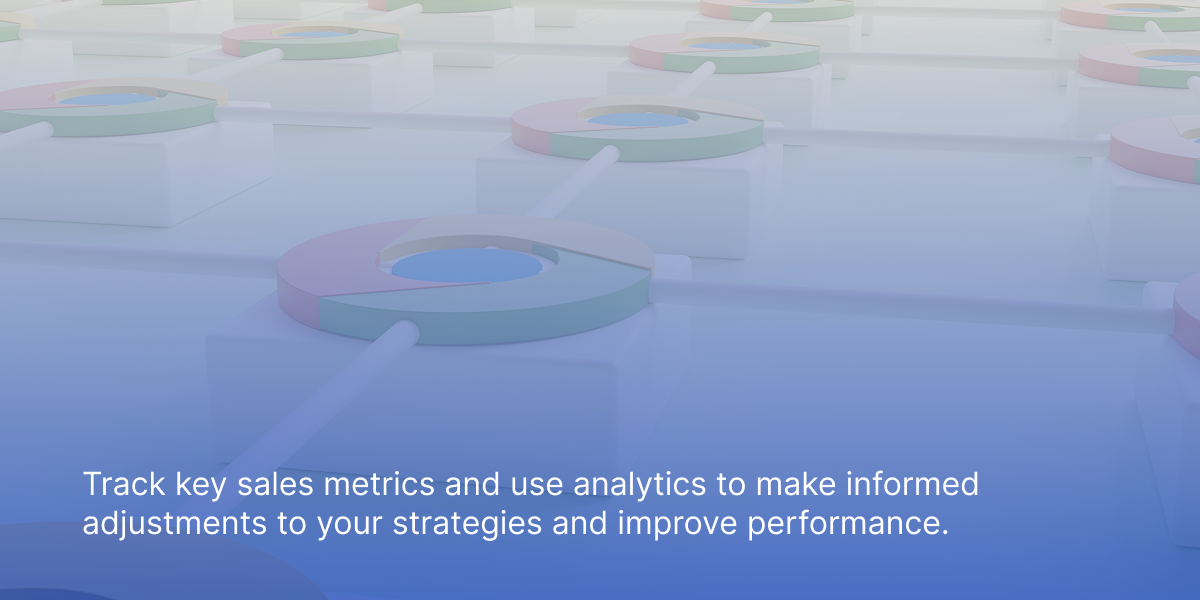
Focusing on essential sales indicators such as conversion rates and average order value provides actionable information for crafting strategies based on data. Tools designed for analyzing sales equip businesses with the feedback required to fine-tune their sales process where needed.
Continuously experimenting with varied value propositions permits companies to calibrate and enhance their messaging according to how customers react. The process of collecting customer feedback through these tests allows for an efficient evolution and improvement of product or service offerings.
Monitor Key Metrics
By keeping track of key sales metrics such as conversion rates, average order value, and customer acquisition cost, companies can evaluate their performance and make decisions that lead to improved sales figures. Utilizing data analytics offers a deeper understanding of consumer behavior and preferences, which assists in refining sales strategies for more effective outcomes.
Consistently monitoring advancement towards pre-defined sales goals is crucial for pinpointing areas that require enhancement. This process ensures that adjustments are made to the sales strategies in place as needed.
Predict Customer Behavior
By employing predictive analytics, companies can anticipate the needs of their customers and adjust their sales tactics accordingly. Gaining insight into customer behavior enables more customized and potent marketing efforts, which boost client contentment. This improved satisfaction fosters greater loyalty and encourages subsequent purchases.
Adjust Strategies Based on Insights
Companies enhance their sales strategies through the persistent examination of data to spot developing trends. Making decisions grounded in data mitigates the risks associated with speculation. Should there be a dip in conversion rates, it’s advisable to review attribution models and conversion trajectories within Analytics.
By modifying strategies informed by these insights, businesses can ensure they stay abreast of market dynamics and consumer demands, thus leading to an increase in sales.
Foster Strong Relationships with Customers

Open communication builds trust and addresses sales challenges effectively. Emphasizing customer benefits creates tailored solutions that meet individual needs, strengthening business relationships.
Stay Engaged Post-Purchase
Maintaining communication with customers following their purchases can strengthen customer retention and loyalty. By keeping in touch, customers are made to feel appreciated and assisted, thereby boosting the chances that they will make future purchases.
Providing follow-up emails, crafting offers tailored to the individual customer, and delivering superb customer service are effective methods for encouraging customers to continue engaging with your business.
Encourage Feedback
Surveys, one-on-ones, and analyzing behavior on social channels gather customer feedback effectively. Feedback loops gather insights, address pain points, and improve products. Actively seeking customer opinions reveals areas for product improvements and new sales opportunities.
Gathering customer feedback is essential for understanding their needs and improving products.
Implement Referral Programs
Establish a referral scheme that motivates current clients to introduce new ones. By rewarding existing customers for endorsement of the brand, such programs serve as an impetus for customer base growth. Providing incentives like discounts when they successfully refer someone can spur customers into action. Enticing rewards could be monetary bonuses, credits on their accounts, reduced prices or even special privileges.
Leveraging incentivized referrals often results in acquiring high-quality prospects at a lower cost. To encourage involvement via word-of-mouth endorsements and lead generation, make sure to feature your referral program prominently in places like thank-you page messages, email footers, and during the initial client onboarding process.
Boost engagement with your referral initiative by providing distinctive referral URLs and ready-to-share content for social media platforms. Keep tabs on how well referrals are doing so you can gauge the success of your program accurately.
Train and Motivate Your Sales Team
Providing sales teams with comprehensive training arms them with the necessary resources and knowledge to boost their sales figures. This type of training enables team members to grasp the most effective strategies for selling products and optimizing sales territories. Consistently organized one-on-one sessions can markedly increase both performance levels and enthusiasm within a sales team.
It is crucial to establish ambitious yet achievable targets when it comes to setting sales goals, since objectives that are too simple may lead to a loss of motivation among the team members. Working together with the sales staff can assist in pinpointing items that carry higher profit margins, which could ultimately augment customer transactions.
Provide Ongoing Training
Ongoing training is crucial for sales teams to remain knowledgeable about new products and current market trends. It plays a significant role in equipping them with up-to-date strategies and insights, which can be instrumental in boosting sales volume.
Frequent performance evaluations combined with updated training resources improve the efficiency of sales training initiatives, ensuring that these programs are beneficial.
Set Performance Incentives
Offering incentives can significantly heighten enthusiasm and propel sales representatives to surpass their goals. Organize competitions and provide rewards to stimulate your sales team, thereby augmenting the volume of sales they generate. Establishing performance-based incentives allows companies to maintain a driven and motivated sales force focused on meeting their objectives.
Foster a Positive Work Environment
For the attainment of exceptional sales performance, it is crucial to ensure that your sales team receives continuous training. Keep them abreast of fresh approaches, updates on products, and current market movements by providing regular education. To maintain their motivation levels high, acknowledge and reward their successes with recognition. Motivate your personnel. By offering a variety of incentives such as bonuses and commission structures.
To boost customer satisfaction and promptly address any problems they may encounter, delivering prompt and efficient customer service support is essential.
Summary
To summarize, the strategy to boost sales in 2025 hinges on generating more revenue by defining precise sales targets while gaining a deep understanding of your intended audience and augmenting your value proposition. Essential actions include refining the sales funnel, capitalizing on online marketing avenues, and elevating the overall consumer experience. Growth drivers include upselling and cross-selling to current clientele, employing analytics for informed decision-making processes, nurturing robust connections with customers, as well as educating and inspiring your sales team members. Execution of these tactics will enable companies to outpace rivals and realize significant advancement in their sales achievements.
Frequently Asked Questions
How can setting clear sales goals help increase sales?
Setting clear sales goals aligns your team’s efforts and drives focus, ensuring that everyone is working toward the same objectives. This shared direction boosts motivation and ultimately helps increase sales volume!
Why is it important to understand your target market?
Understanding your target market is crucial because it empowers you to customize your sales strategies and marketing messages to persuade prospects, ultimately fulfilling your customers’ needs and driving increased sales.
Connect with your audience, and success will follow!
What are the benefits of leveraging digital marketing channels?
By leveraging digital marketing channels, you can significantly boost your brand awareness, increase brand awareness, reach a larger audience, and drive more traffic to your website, ultimately leading to increased sales.
Embrace the digital landscape and watch your business thrive!
How can improving customer experience lead to increased sales?
Enhancing the customer experience can boost sales as it nurtures loyalty and contentment among customers, prompting them to buy again and recommend your business to others.
Concentrate on refining communications with customers and streamlining transactions for better outcomes – observe how this elevates your sales figures when a customer buys and experiences thoughtful engagement!
What role does data-driven decision making play in increasing sales?
Data-driven decision making is crucial for boosting sales as it empowers businesses to make informed, strategic choices that enhance performance and refine strategies for better results. By analyzing sales funnels, businesses can break down stages like awareness, interest, decision, and action to identify improvement opportunities and optimize sales strategies, thereby enhancing conversion rates and overall revenue.
Embrace the power of data to elevate your sales game!



